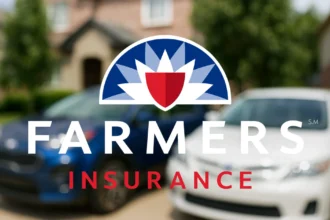Introduction
House flipping, the process of buying a distressed property, renovating it, and then reselling it for a profit, has gained immense popularity in recent years. However, as lucrative as it may seem, house flipping is not without its risks. One wrong move or miscalculation can quickly turn a potential profit into a significant loss. This is where the 70% rule in house flipping comes into play, serving as a valuable guideline for house flippers to maximize their chances of success.
What is the 70% Rule in House Flipping?
The 70% rule is a fundamental principle in the house flipping industry that helps investors determine the maximum amount they should pay for a distressed property. According to this rule, the total cost of acquiring and renovating a property should not exceed 70% of its after-repair value (ARV), minus the cost of repairs.
The formula for the 70% rule is as follows:
Maximum Purchase Price = (ARV x 0.7) – Estimated Repair Costs
Here’s a breakdown of the key components:
After-Repair Value (ARV)
The ARV represents the estimated market value of the property after all necessary repairs and renovations have been completed. This value is typically determined by analyzing comparable properties (comps) in the same neighborhood that have recently sold. Real estate professionals, such as experienced agents or appraisers, can provide valuable insights into estimating the ARV accurately.
READ ALSO: Evaluating the Potential of a House Flip: How To Know if a House Will Be a Good Flip
Repair Costs
Repair costs encompass all expenses associated with renovating the property, including materials, labor, permits, and any unexpected costs that may arise during the renovation process. It is crucial to obtain accurate estimates from contractors or professionals to avoid underestimating these costs, which can significantly impact your potential profits.
The 70% Factor
The 70% factor is the core principle of the rule. By limiting the total acquisition and renovation costs to 70% of the ARV, the remaining 30% acts as a buffer to account for unforeseen expenses, carrying costs (such as utilities, property taxes, and insurance), and potential market fluctuations. This buffer also ensures that you have room to make a reasonable profit on the flip.
Why is the 70% Rule Important?
The 70% rule serves as a guideline to help house flippers make informed decisions and minimize the risks associated with their investments. Here are some key reasons why this rule is essential:
1. Maximizes Potential Profits
By adhering to the 70% rule, you increase the likelihood of generating a substantial profit on your flip. The 30% buffer provides a cushion for unexpected costs, ensuring that you don’t end up losing money or barely breaking even.
2. Mitigates Financial Risk
House flipping can be a risky endeavor, especially if you overestimate the ARV or underestimate the repair costs. The 70% rule helps mitigate this risk by setting a conservative limit on the amount you should invest in a property, reducing the likelihood of financial losses.
3. Facilitates Better Decision-Making
By providing a clear framework for evaluating potential deals, the 70% rule aids in making informed decisions. It helps you identify properties that have the potential to generate a reasonable return on investment (ROI) and avoid those that may be too risky or unprofitable.
4. Promotes Discipline
The house flipping industry can be alluring, with the promise of quick profits. However, it’s easy to get carried away and overpay for a property. The 70% rule instills discipline by setting boundaries and encouraging investors to stick to a well-defined strategy.
READ ALSO: Inspiring House Flipping Success Stories: Valuable Lessons from Real Estate Investing Pros
Exceptions to the 70% Rule
While the 70% rule is a widely accepted guideline in the house flipping industry, it’s important to note that there can be exceptions to this rule. In some cases, investors may choose to deviate from the 70% threshold based on specific circumstances or market conditions. Here are some potential exceptions:
1. High-Demand Markets
In hot real estate markets with limited inventory and high buyer demand, the 70% rule may be too conservative. In such cases, investors may be willing to stretch the threshold to 75% or even higher, as the potential for a higher ARV and quicker sales can offset the increased risk.
2. Exceptional Properties
Certain properties, such as those in highly desirable locations or with unique features, may justify exceeding the 70% limit. If the property’s potential ARV is significantly higher than comparable properties, the increased investment may still yield a substantial profit.
3. Experienced Investors
Seasoned house flippers with a proven track record and a deep understanding of the local market may choose to deviate from the 70% rule based on their experience and risk tolerance. However, it’s crucial to exercise caution and thoroughly analyze the potential risks and rewards before making such a decision.
Calculating the 70% Rule
To apply the 70% rule effectively, it’s essential to accurately estimate the ARV and repair costs. Here’s a step-by-step guide to calculating the maximum purchase price using the 70% rule:
Step 1: Determine the ARV
Start by researching recent comparable sales in the same neighborhood or area. Look for properties with similar characteristics, such as size, number of bedrooms and bathrooms, and overall condition. Use the sale prices of these comparable properties to estimate the potential ARV of your target property after renovations.
It’s advisable to consult with a real estate professional or appraiser to obtain a more accurate estimate of the ARV based on their expertise and market knowledge.
Step 2: Estimate Repair Costs
Conduct a thorough inspection of the property to assess the necessary repairs and renovations. Consider factors such as structural issues, plumbing and electrical work, roofing, flooring, and cosmetic updates.
Obtain estimates from contractors or professionals for each aspect of the renovation, and create a detailed budget that includes materials, labor, permits, and a contingency fund for unexpected expenses.
Step 3: Apply the 70% Rule Formula
Once you have estimated the ARV and repair costs, apply the 70% rule formula:
Maximum Purchase Price = (ARV x 0.7) – Estimated Repair Costs
For example, let’s say the estimated ARV of a property is $300,000, and the estimated repair costs are $50,000. Applying the 70% rule, the maximum purchase price would be:
Maximum Purchase Price = ($300,000 x 0.7) – $50,000
Maximum Purchase Price = $210,000 – $50,000
Maximum Purchase Price = $160,000
In this scenario, you should aim to purchase the property for no more than $160,000 to ensure a reasonable profit margin after accounting for the repair costs and the 30% buffer.
Conclusion
The 70% rule is a powerful tool for house flippers to maximize their potential profits while minimizing financial risks. By adhering to this guideline, investors can make informed decisions and avoid overpaying for properties, ensuring a reasonable return on their investment.
While the 70% rule is not a guaranteed formula for success, it provides a solid framework for evaluating potential deals and setting boundaries. Coupled with thorough research, accurate estimates, and a deep understanding of the local market, the 70% rule can be a valuable asset for any house flipper, whether a seasoned professional or a newcomer to the industry.
Remember, successful house flipping requires a combination of knowledge, strategy, and discipline. By incorporating the 70% rule into your investment approach, you can increase your chances of achieving long-term success in the dynamic world of real estate investing.
If you’re considering embarking on a house flipping venture and need financing assistance, RCN Capital offers flexible financing solutions tailored to the needs of real estate investors. Their experienced team can guide you through the process and help you secure the necessary funds to make your house flipping dreams a reality.
READ ALSO: Avoid These 16 Common Mistakes When Flipping a House for First-Time Investors
FAQs
1. Is the 70% rule set in stone?
No, the 70% rule is not a fixed rule but rather a guideline. Experienced investors may choose to adjust the percentage based on their risk tolerance, market conditions, and other factors. However, it’s generally advisable to follow the 70% rule, especially for beginner or risk-averse investors.
2. How do I estimate the ARV accurately?
To estimate the ARV accurately, you should analyze recent comparable sales in the same neighborhood or area. Look for properties with similar characteristics, such as size, number of bedrooms and bathrooms, and overall condition. Additionally, consult with real estate professionals or appraisers who have extensive knowledge of the local market.
3. Can the 70% rule be applied to any type of property?
The 70% rule can be applied to various types of residential properties, including single-family homes, multi-unit properties, and condominiums. However, it’s important to consider the specific characteristics and market conditions for each property type when estimating the ARV and repair costs.
4. What if I exceed the maximum purchase price calculated using the 70% rule?
If you exceed the maximum purchase price calculated using the 70% rule, you increase the risk of not generating a reasonable profit or potentially incurring a loss on the flip. While exceptions may apply in certain circumstances, it’s generally advisable to stick to the 70% rule to mitigate financial risks.
5. Can the 70% rule be applied in hot real estate markets?
In hot real estate markets with high buyer demand and limited inventory, some investors may choose to adjust the 70% rule to account for the potential for higher ARVs and quicker sales. However, this approach should be taken with caution and a thorough understanding of the local market conditions and potential risks.
In another related article, House Flipping Investment Strategy: A Path to Financial Freedom





